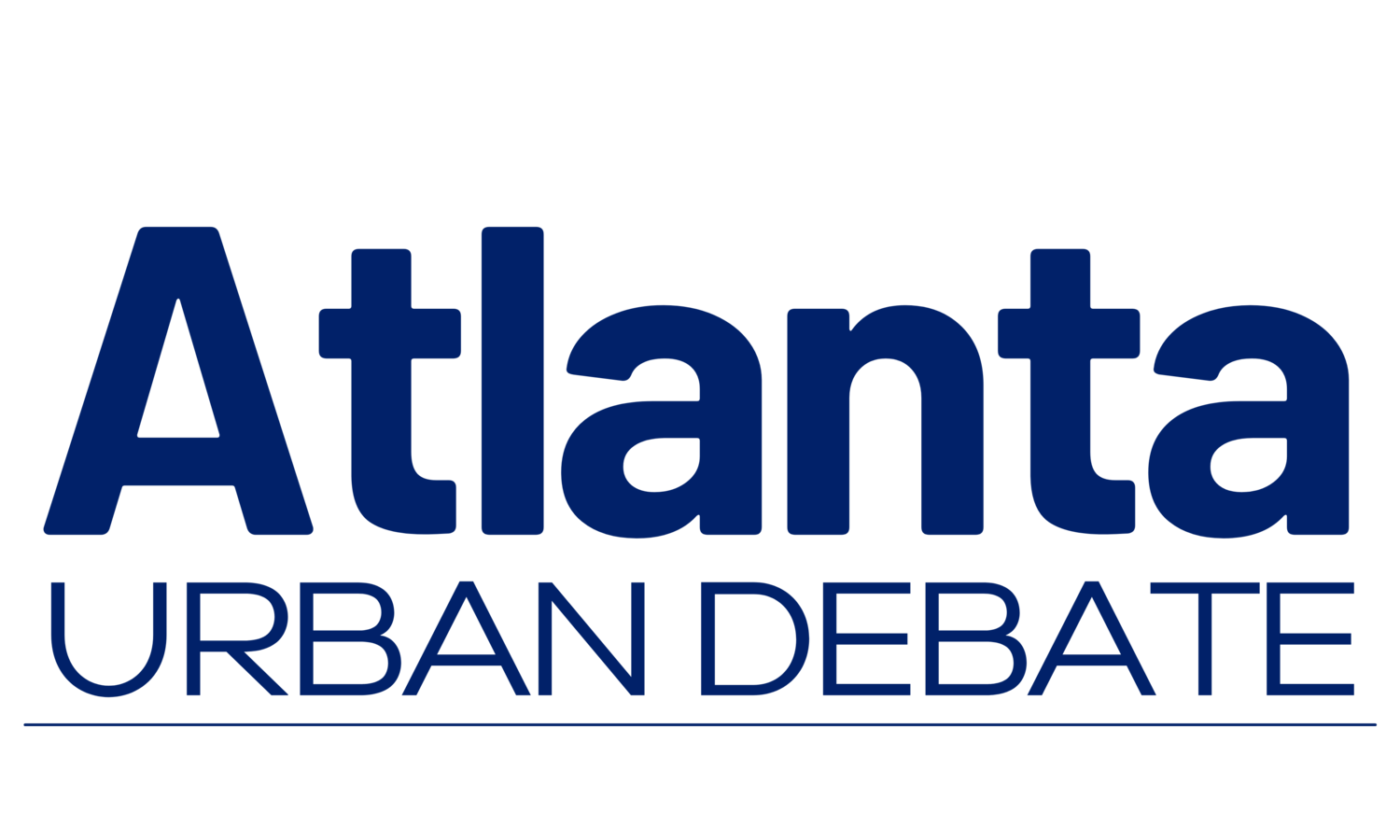The Atlanta Urban Debate League is committed to providing excellent debate education programs, services, and opportunities to diverse students, educators, and members of the community!
Counterplans: Net Benn Diagram
Learning Objectives
Introduce parts of a counterplan.
Time Needed
~10-15 min.
Resources & Materials
Expo markers/chalk
Teacher Preparation
- Come up with a hypothetical plan with a specific problem in mind.
- Example: Plan: The USFG should raise the federal minimum wage to $15 per hour.
- Example: Plan: The USFG should fully subsidize public transportation.
Lesson Outline
- Net Benn Diagram (Activity)
- Create three columns on the board: “Affirmative Plan”, “Negative Counterplan”, and “Net Benefit”.
- Write the plan prepared beforehand under “Affirmative Plan”.
- In parentheses, write whatever problem the plan is meant to solve (e.g., poverty).
- Ask the students to brainstorm other options to solve whatever problem the plan would solve. Write their ideas under “Negative Counterplan”.
- Make sure students understand that their ideas do not have to seem like another affirmative plan (their plans can use actors other than the USFG, for example).
- If students struggle to come up with ideas, some generic counterplans you can add are:
- The 50 states should [whatever the plan does].
- The president should [do whatever the plan does] via an executive order.
- Consult NATO/Japan/UN/etc. before doing the plan.
- After students have come up with some counterplans, ask them what makes their ideas preferable to doing the affirmative plan, and write their responses under “Net Benefit”.
- In addition to more obvious benefits like being more cost-effective or better resolving the problem, net benefits can be that the counterplan avoids something bad that the affirmative plan doesn’t (often a disadvantage impact).
- Ex. The 50 states CP doesn’t undermine state autonomy (avoids Federalism DA).
- Ex. A consult CP avoids upsetting US allies.
- In addition to more obvious benefits like being more cost-effective or better resolving the problem, net benefits can be that the counterplan avoids something bad that the affirmative plan doesn’t (often a disadvantage impact).
- Introduction to Counterplan Structure
- Explain that all counterplans have 3 parts:
- Counterplan text: the specific policy proposal.
- Solvency advocate: evidence on how the counterplan solves the affirmative advantage(s).
- Net benefit: What makes the counterplan preferable to the plan.
- The net benefit is often, but not always, not linking to a disadvantage.
- Use examples from the activity.
- Explain that all counterplans have 3 parts:
Points of Improvement
Students struggle to come up with net benefits for their counterplans.
Signs of Mastery
Students can explain why there’s a distinct reason that doing the counterplan is preferable to doing the affirmative plan.
Instructor Notes
This activity works well as a warm-up.
Coming up with multiple plans makes this an easy activity to repeat.
